The Cocaine Bear, or the Story of how an American policeman became a famous drug dealer
Categories: History | North America | Society
By Pictolic https://pictolic.com/article/the-cocaine-bear-or-the-story-of-how-an-american-policeman-became-a-famous-drug-dealer1.html"On September 11, 1985, a resident of Knoxville, Tennessee, found the corpse of an unknown white man on the path leading to his house, who literally fell from somewhere in the sky. The man was wearing a bulletproof vest and night vision goggles, and slings stretched from behind to the dome of the opened parachute.
In a green army backpack attached to the body, the police arrived at the scene and found 40 kilograms of cocaine, $4,548 in cash, 6 krugerrands (gold coins minted in South Africa), a knife, two pistols with additional magazines, a bag of dry rations, a package of vitamins, a compass, an altimeter, documents for different names, a Miami Jockey Club membership card and a key to the plane. The package of cocaine was labeled as USA 10, and the cost of the drug, according to a police expert, was at least $ 15 million."
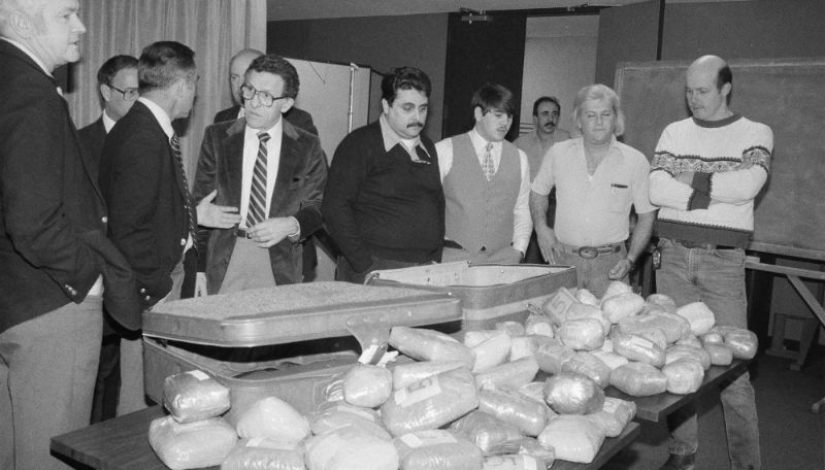
During the investigation of a criminal case, it is possible to seize property belonging to the suspect, the accused or persons responsible for their actions. It is no secret that the investigating authorities have always abused unlawful arrests in the framework of fabricated criminal cases.
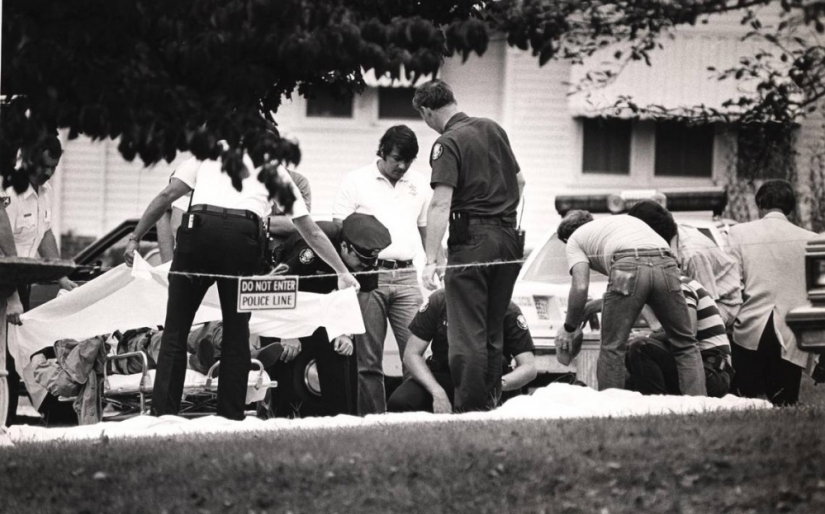
The next day, the remains of a Cessna 404 twin-engine aircraft were found 60 miles (96 kilometers) from the body, and eight more numbered packages of cocaine were found on the ground along its flight route. With numbers from 1 to 9. Only the package number 3 was missing. It became clear that found in The Knoxville dead man was most likely involved in transporting drugs aboard a private jet. For some reason, he started dropping packages over a large wooded area on the border of the states of Georgia and Tennessee, and then jumped off himself, but unfortunately crashed because he opened the parachute at too low altitude. Who was this man and what led him to such an unexpected end?
Andrew Carter Thornton II, as the newspaper wrote about him, was born "with blue blood in his veins and a silver spoon in his mouth." He came from a family of wealthy Kentucky horse breeders and never knew what need was. His parents sent Andrew to study at a prestigious private school, and then, in order to teach their son to order and responsibility, they applied for admission to the military academy, which he successfully graduated from. After graduation, Thornton joined the army and joined the 82nd Airborne Division of the U.S. Army, where he received a Purple Heart during the operation to invade the Dominican Republic.
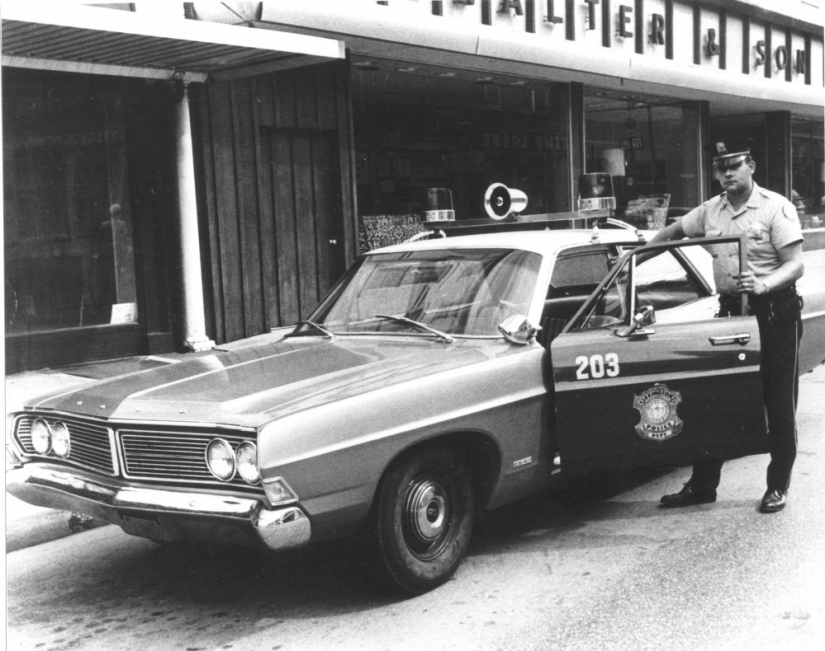 Lexington Police officer, early 70s.
Lexington Police officer, early 70s.
The systemic fight against drugs was just being formed, and no one knew how to do this job properly. I had to invent everything on the go. For the bosses, the most important thing was the result, not what methods it was achieved by. Thornton worked as an undercover agent, carried out control purchases, acted as a wholesale buyer and often communicated with drug dealers. Constantly raising the bar of risk, he realized that he was already bored of being just a policeman. Thornton wanted more.
He began selling confiscated goods, planting drugs to make arrests, often resorted to violence and at some point finally crossed the line separating the representative of the law from the criminal. Thornton did not use drugs and did not need money, as he received a rather impressive inheritance from his family. He was attracted by a constant sense of danger, which intoxicated and gave courage, and impunity gave the feeling that he was smarter than everyone and no one in the world could beat him. As a result of such an internal psychological transformation, the drug agent retrained into a drug dealer, becoming the leader of a criminal community known as the "Company", which for several years successfully engaged in drug smuggling from Colombia in United States of America. It was the biggest and most high-profile drug trafficking case in the history of Kentucky.
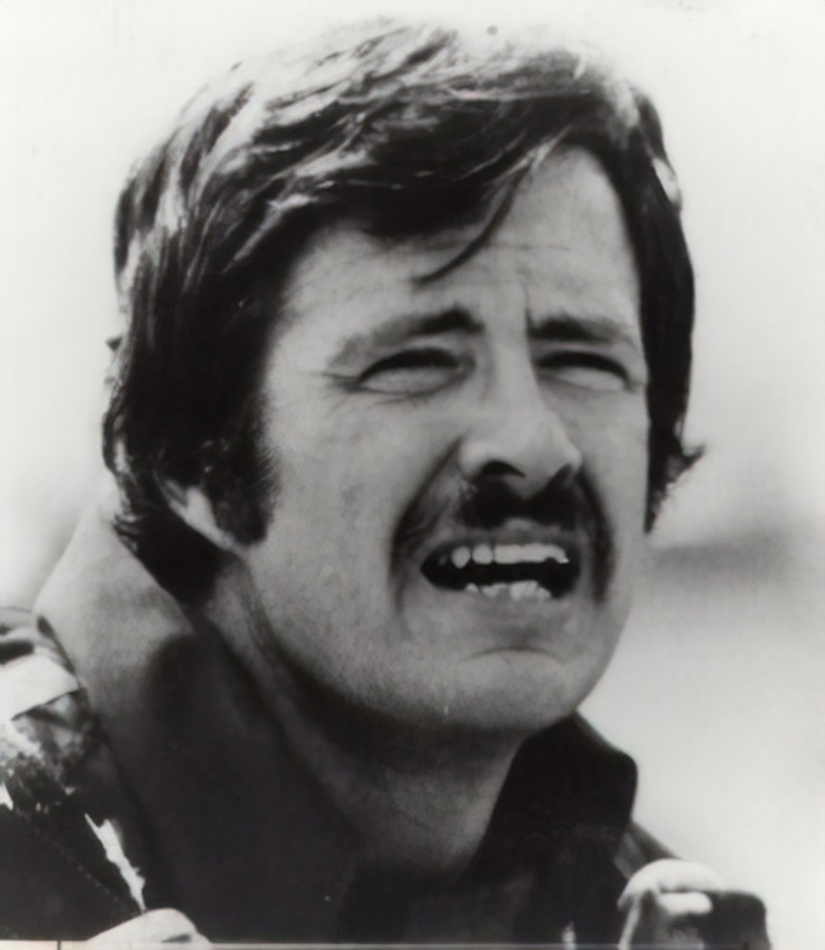 Andrew Carter Thornton II.
Andrew Carter Thornton II.
In his spare time from policing and crimes, Thornton received a pilot's license, took up martial arts and began skydiving, making hundreds of jumps. Friends called him a specialist in survival and a man who is always ready for any cataclysms. In 1977, Thornton retired from the police and allegedly began to engage in legal activities. But this was only a cover and the end point of the transformation from a policeman to a criminal. His main occupation is not criminal law, but drug smuggling — cocaine and marijuana.
 Cessna 404 aircraft.
Cessna 404 aircraft.
Thornton was not alone in the criminal organization called the "Company". His old friend from private school, the son of the former mayor of Lexington, Bradley Bryant, who was responsible for the official cover, money and necessary connections, also participated in the business. The third person in the organization was Henry Vance, a former colleague of Thornton's from the narcotics department. He was a member of one of Lexington's most respected and influential families, left the police force for politics and became an assistant governor of the state. Vance was their eyes and ears in the governor's office, responsible for political cover and insider information regarding any investigation into their activities.
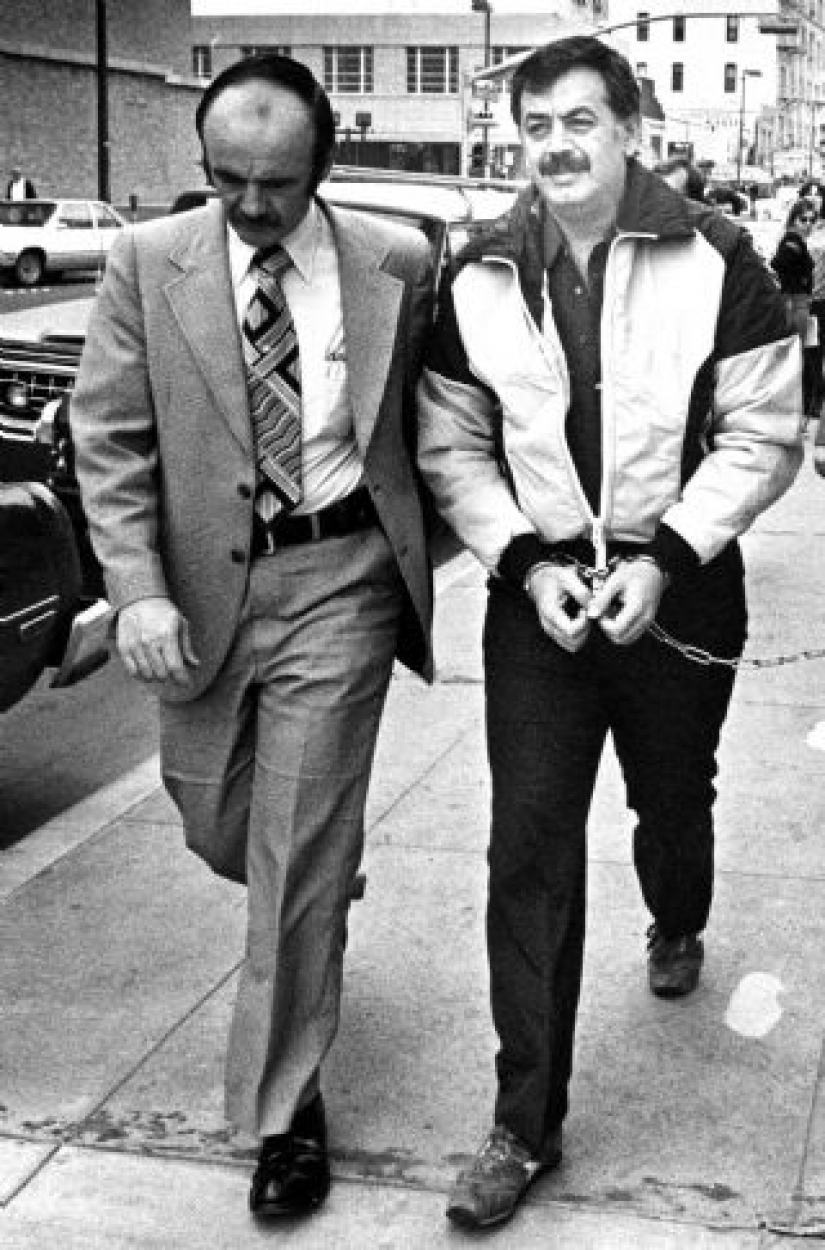 Jimmy Chagra after his arrest.
Jimmy Chagra after his arrest.
The first serious problems began after Bryant decided to contact Jimmy Chagra— the largest drug lord in the south of the United States at that time, who imported marijuana into the country on a truly industrial scale. At the end of 1978, they conduct a joint operation and deliver 9 tons of selected weed from Columbia to Lexington. A couple of months later, they bring the same amount. For transportation, they no longer use a twin-engine Cessna, but a Douglas DC-4 transport.
The business is starting to grow, but here in El Paso arrests Chagra. The case is being handled by Judge John Wood, who became famous for his ruthless attitude towards drug dealers and long sentences for the accused, for which he received the nickname Maximum John. To avoid punishment, Chagra did not come up with anything better than ordering the murder of a judge. Before that, he tried to kill the assistant prosecutor, but it didn't work out. Despite the 19 bullets fired, he escaped with a slight fright and a couple of scratches. This time Chagra approached the case in more detail and for 250 thousand dollars hired a hitman named Charles Harrelson, who successfully completed the order by shooting the judge in the back with a shotgun. It was the first murder of a federal judge in the United States in 100 years and the first (but, unfortunately, not the last) in the XX century.
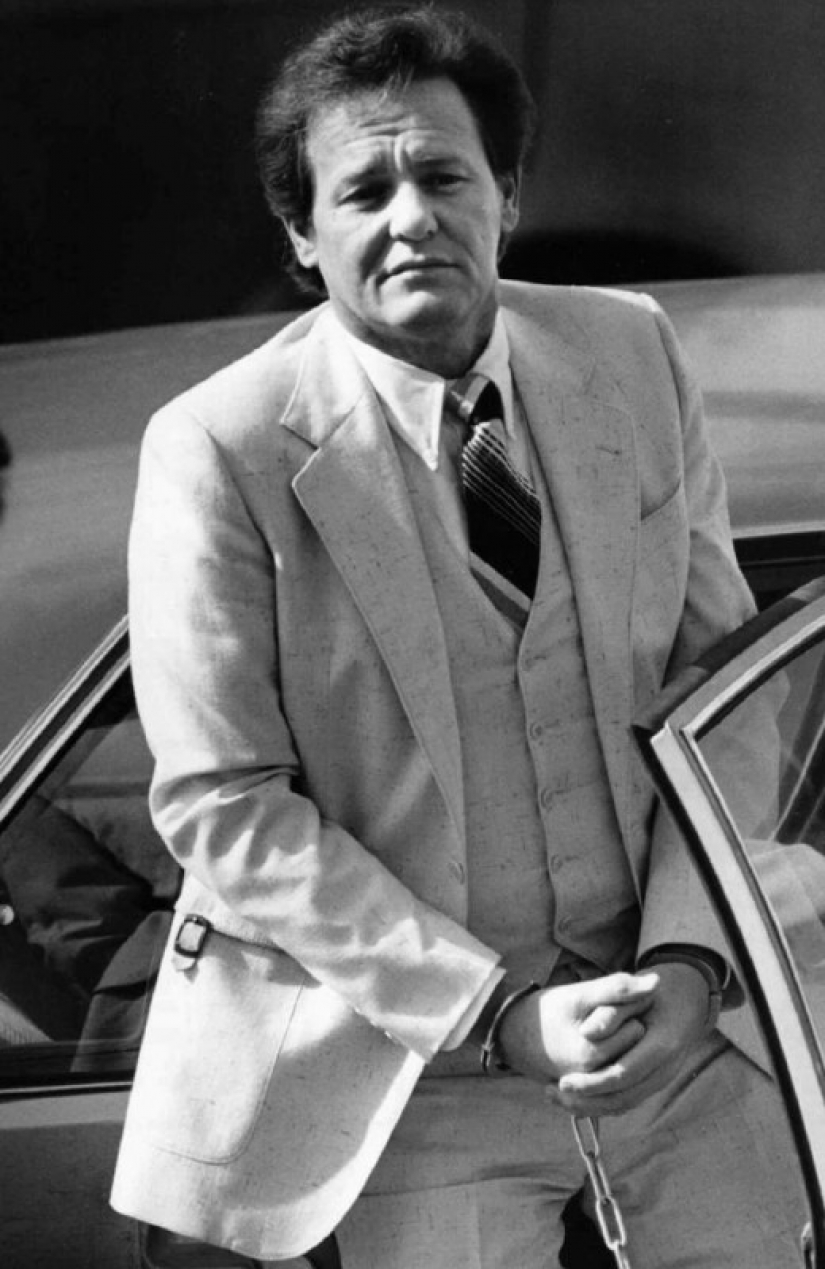 Charles Harrelson, Woody Harrelson's father.
Charles Harrelson, Woody Harrelson's father.
Interestingly, Charles Harrelson is the father of the famous American actor Woody Harrelson. In 1980, during the operation to capture him, he surrendered to the police and claimed that he had killed Judge Wood and John F. Kennedy. They even tried to investigate the latter, but they never found any evidence. As a result, he received two life sentences and died in prison, where his son often visited him. Jimmy Chagra served 24 years, was able to be released and even got into the witness protection program. In 2008, he died of cancer at his home in Arizona.
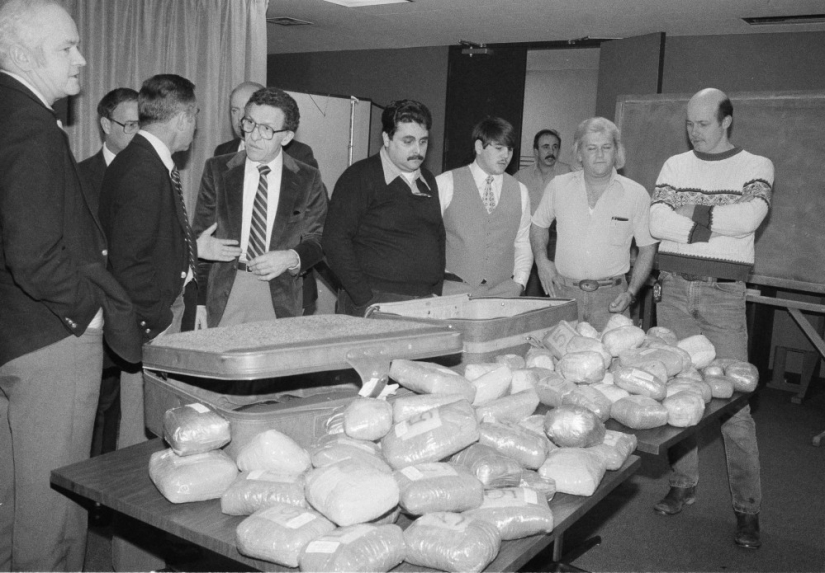 Police with arrested cocaine, 1983.
Police with arrested cocaine, 1983.
But back to our story. After the murder of the judge, all federal agencies that could only participate in the investigation took up the case of Chagra, which led to the active unwinding of the criminal ties of the former drug lord and jeopardized the business of the "Company". At this moment, according to the investigation materials, the views on the future have Thornton and Bryant separated. The first, despite his love of risk and adventure, offered to keep a low profile and work as they worked, while the second, on the contrary, decided to take advantage of the situation and seize control of the empire of the imprisoned Chagra.
As a result, each of them went their own way. Thornton returned to operations in Kentucky, and Bryant started his big game. Not having enough money and the right connections to purchase drugs, he planned to rob a military warehouse and exchange the stolen weapons for cocaine from the Colombians. At that moment, the drug cartels were even more interested in barrels and cartridges than money. With the help of Bryant's nephew, who had access to the secret US Navy China Lake warehouse in California, they were able to take out automatic rifles, cartridges and the latest night vision devices. Bryant places part of the stolen goods in a warehouse in Lexington, some of them are transported to Colombia and changes, as planned, for cocaine.
A few months later, a maid at a Las Vegas hotel smelled marijuana coming from under the door of one of the rooms and reported it to the manager, who called the police. She wouldn't have done it if the guests hadn't skimped on tips during the last cleaning of the room. But since they didn't even leave her a dollar, a law-abiding citizen immediately woke up in the maid, who hurried to inform the authorities about the violation. The cops who arrived at the scene expected to meet another pot lover in a hotel room with an underage girlfriend, but instead found an automatic weapon, a device for encoding a telephone signal, 25 thousand dollars in cash and a lease agreement for a warehouse in Lexington, which led them to even more weapons, among which was a large-caliber machine gun, tasers and night vision devices that were reported stolen from a military base.
One of the names in Bryant's notebook was, as you probably guessed, the name of Andrew Thornton, who was arrested along with 25 other defendants in this case. Thornton pleaded not guilty, was released on $1,000,000 bail and fled. For six months, he was a fugitive from justice, traveling on his plane from one city to another, until customs agents intercepted his radio conversations and arrested Thornton in North Carolina at the moment when he was refueling his Cessna. His participation in the robbery of an armory remained unproven, and in the case of drug smuggling, he passed as a pilot who delivered cargo from Colombia in the USA. Thornton made a deal with the investigation, received a $ 500 fine, six months in prison and five years probation. He'd also been stripped of his law license, but that seemed to be the least of Thornton's worries.
Five months later, he gets out of prison for good behavior and returns to what he was doing before his arrest. A year later, based on the testimony given by the informant, the FBI takes him into development. On September 11, 1985, he gets into his twin-engine Cessna 404 and goes to Colombia for the next batch of goods. On the way back, two federal jet planes land on his tail, and Thornton decides to slow down, drop the goods and jump off with a parachute in order to avoid arrest. You already know how it ended.
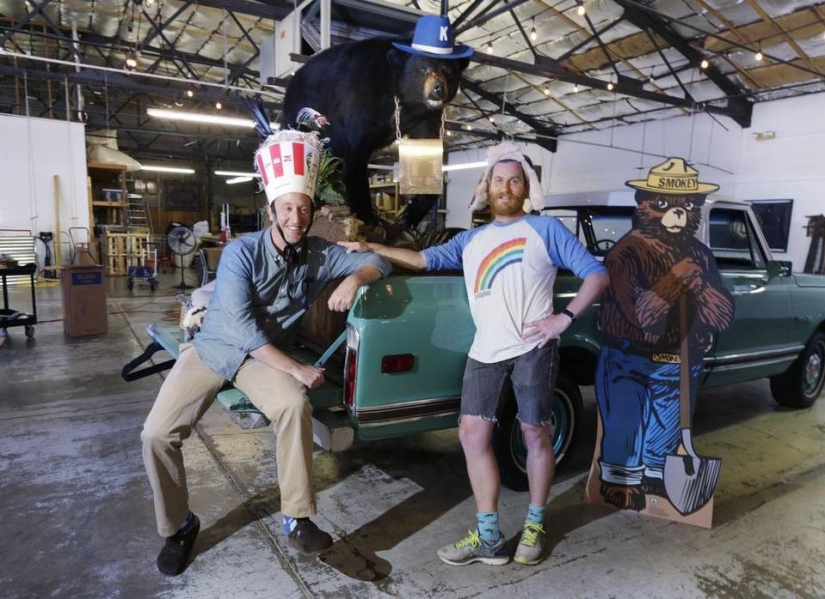
So what does the bear have to do with it? The fact is that this story had a sequel. Three months later, a dead bear was found in the Chatahoochee National Forest. Next to the carcass were the remains of the same 40-kilogram package of cocaine that was in the backpack Andrew Thornton. The bear found the dumped cocaine, tore open the package and died of an overdose, devouring almost all of its contents. According to the pathologist who opened the bear, his stomach was completely stuffed with white powder and no living creature on earth could have survived by devouring such an amount of the drug. Intracerebral hemorrhage, respiratory failure, hyperthermia, kidney failure, heart failure, stroke — all this was in that bear. He went down in history as the "cocaine bear", or Pablo Esco-bear. Now his effigy is on display in the local hipster store Kentucky Fun Mall.
Keywords: 80s | Cocaine | Smuggling | Bears | Drug dealer | Policeman | Criminals
Post News ArticleRecent articles

We tend to perceive color photographs as something more real and modern. Thanks to the passion of the artist Olga Shirnina, who ...

Inspired by the observations of the countryside around Epping in Essex, where she grew up, Jill Barklem came up with a series of ...
Related articles

Bruce Gilden is a legendary photographer, famous for his impressive portraits of ordinary passers-by on the streets of New York. He ...

She was the brightest star in the American music for several decades. Chocolate beauty with a white smile and amazing powerful ...
Slim half-naked girls in the gym — a fascinating spectacle. In 1985 came the painting "Perfect" ("Perfect") with John Travolta ...

The gloomy streets of deserted cities, the stinking carts laden with corpses, the fear in people's eyes, and the all-pervasive ...